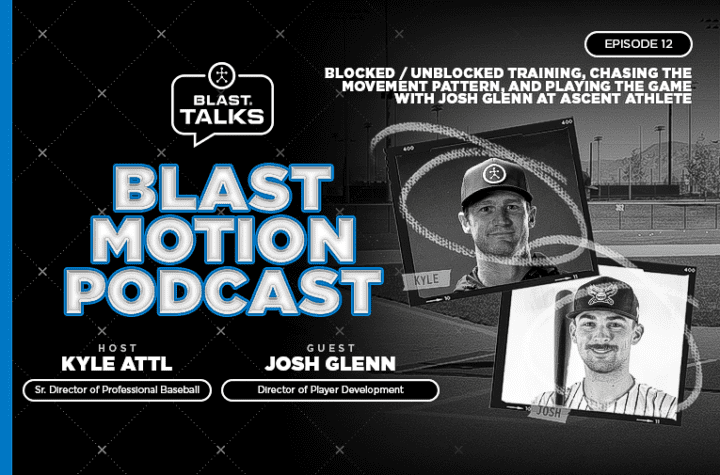
Our latest blog visits Texas Blaze Fastpitch Founder JB Slimp as he shares how the integration of Blast into their organization has impacted player development and athlete competition. Here’s what he had to say:
Starting with Blast
“Once we get the sensor and everything connected, we’ll do some baseline testing and usually I’ll use a Tee. But I’ll also do front toss and then velocity off of a machine. This way we can see how the baseline metrics change according to the type of environment that they’re swinging.
From there, I’ll usually look at their deficiencies and strengths and talk to them about what I find. Then we’ll go to work each week with working on a metric. Every athlete is different, but I tend to gravitate toward Connection. If I see some Connection deficiencies there, then I’m usually going to start attacking those.
We’ll set up certain drills that I know can affect that metric. We will get the Blast going on the iPad or whatever and we’ll take swings and do instant feedback, back and forth, on what we’re seeing.
I have them experiment with trying to manipulate the metric because I want the athlete to be able to understand whatever they’re doing that’s changing that metric. I challenge them to try to feel that. We will continue that process, whether it’s Plane, Connection or Rotation. Then we always try to focus on Bat Speed once we have a metric where we want it to be because you can sometimes get Connection to jump a little bit if you slow down or something like that.
Using Blast Connect and Setting Up Competitions
I like to get onto Blast Connect to sort by the different metrics and to see where our athletes are. I love to find the three greens. A lot of times I’ll seek those out. We’ll set up contests for swing counts and then what I do is (I call it) “Our Starting Nine,” and I’ll put a lineup together and that lineup will be the swing counts with the leadoff hitter being the one who has the most swings. It’s kind of fun for the kids to see that visually. If they come out and they’re in the starting lineup, then they know they were one of the most active kids that month in swinging the bat.
Whether I’m instructing or working with a team, the competitions are always the thing that kids want the most. The competing part of it is a huge component because kids just love to compete. I think that that’s a big motivator. And, if you are a program that’s using it on a larger scale, I think creating competitions is a great way to get more reps and more production from the metrics.
Guide by the Side
With Blast, I can send kids home with homework. Blast has really allowed me to see their focus at home and also makes it fun for them to learn about their swing. The more the kids can learn about their own swing, the easier it is to make their own adjustments.
When a kid or parent reaches out remotely, I always instruct them to go to the training that Blast has right in the app because I think with the new release, it’ll take you straight there on some drills. I always tell kids, “First, educate yourself, check out every drill they have. There’s going to be some that you really enjoy and it’ll straight up tell you what metric it’s trying to help you with. You absolutely want to use those resources that Blast has already providing.”
As an organization, we are even trying to work on having our own kind of Blast Clinics, in which we go out with a few of our player development coaches to the different areas and really be hands on and how you can work with the metrics.
Summary
I believe Blast is doing an amazing job, and I feel like they are very engaged in providing updates and really focused on making this something for the future…not just for right now.”
To view more content from the Texas Blaze organization, visit our Youtube page.













